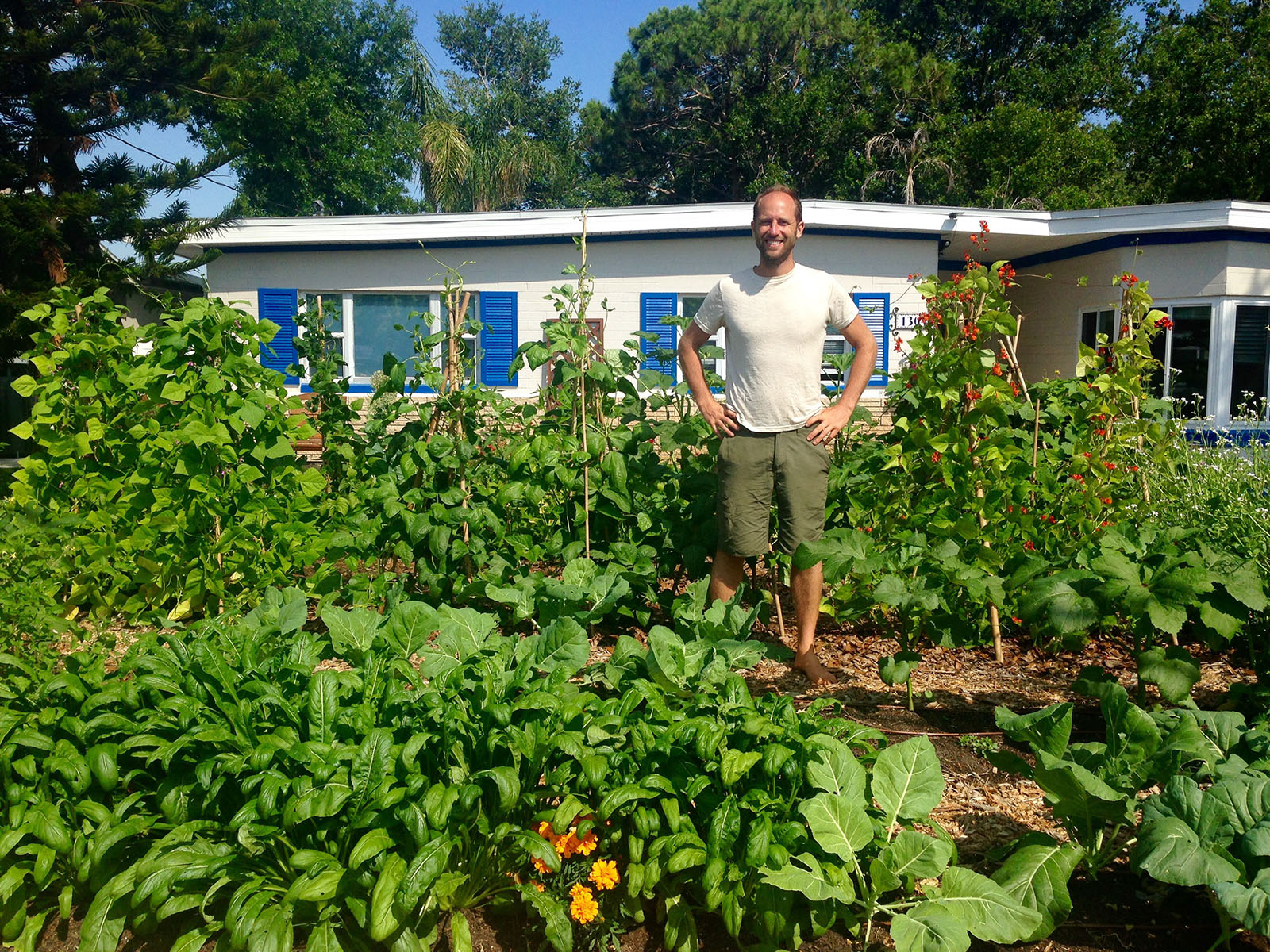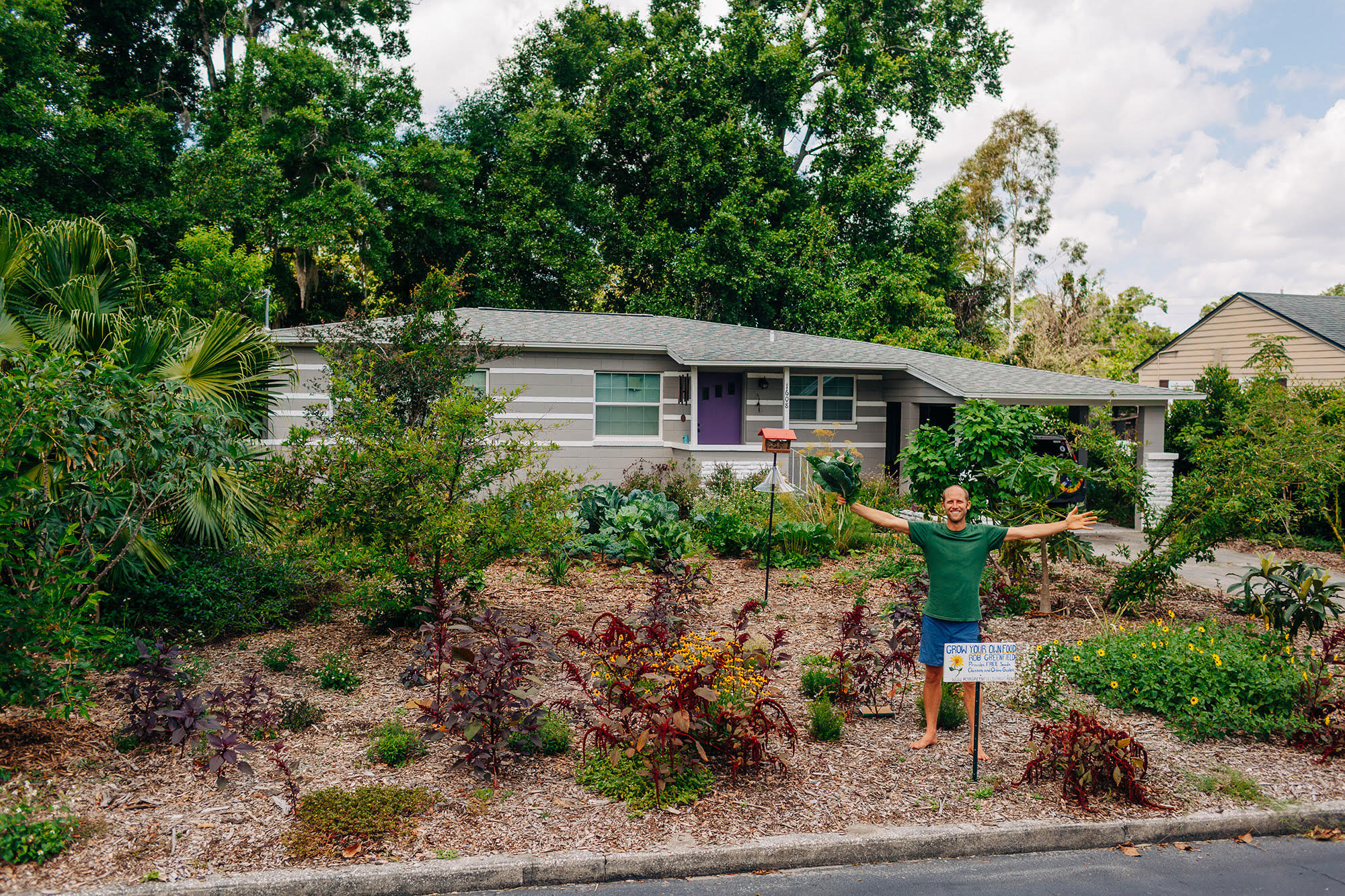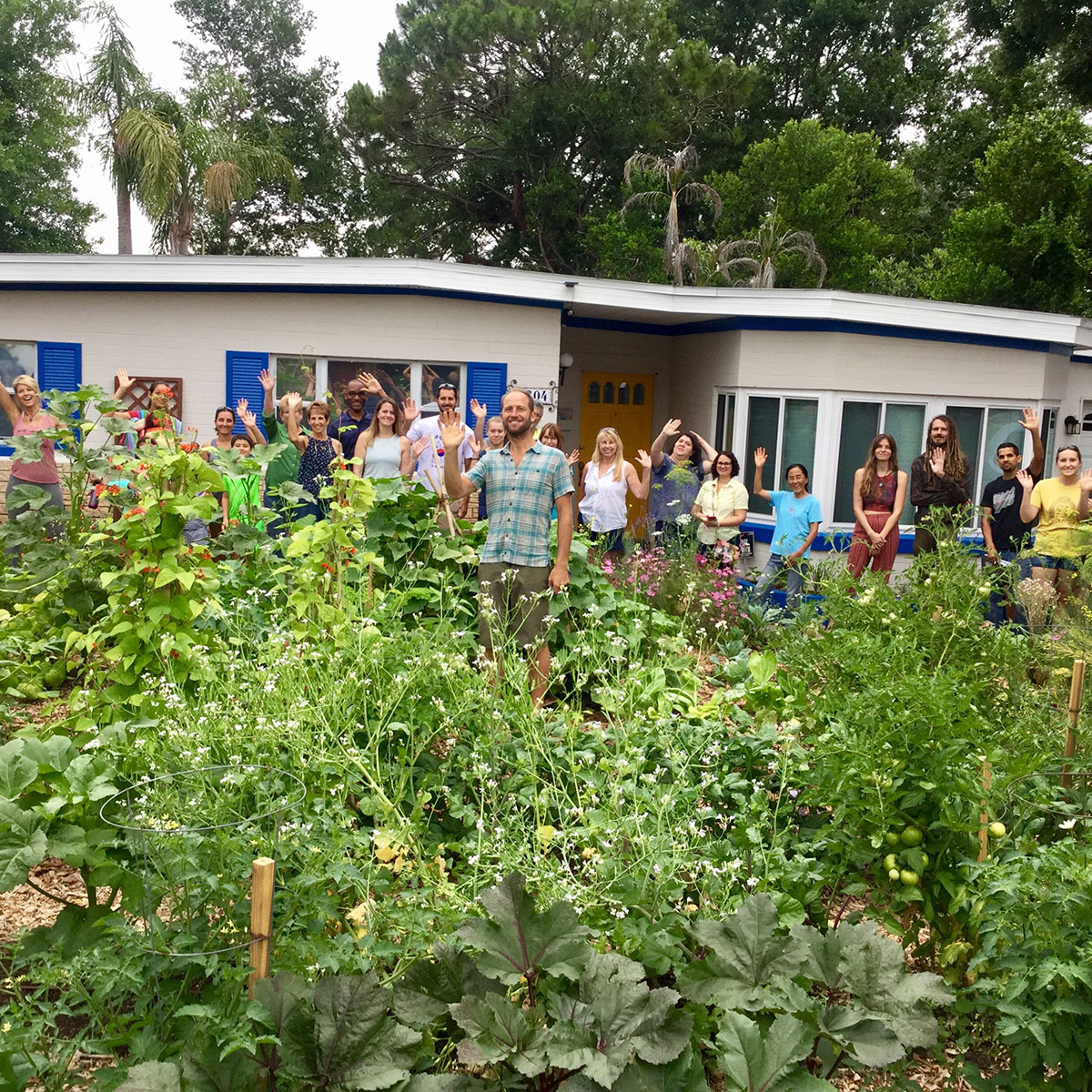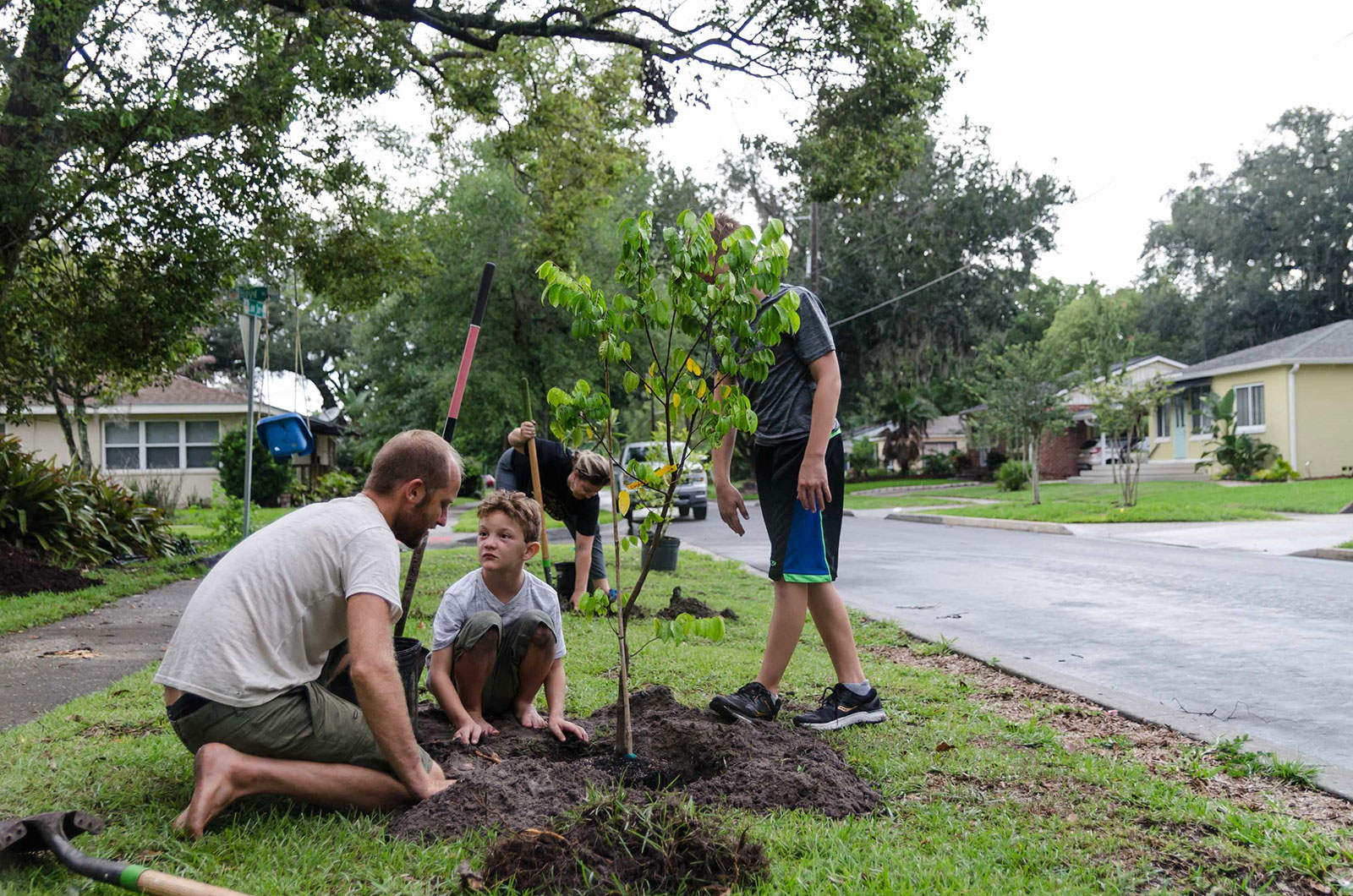For the past six years, Rob Greenfield has structured his entire life around raising awareness about environmental issues, literally. He’s dumpster-dived across the U.S. to expose grocery story food waste, lived off-grid in a 50-square-foot tiny house, and wore every piece of trash he created for 30 days. Currently, he is more than halfway through his latest project, Food Freedom, where he’s spending a year growing and foraging 100% of his food. As if that’s not challenging enough, he’s growing all this food in urban Orlando with no land of his own.
Greenfield is growing his food throughout six shared gardens that he has planted in other people’s yards. One is in the front yard of property where he’s set up his tiny house. The rest are in other residential yards within a two-mile radius. The owners of the properties have given him permission to grow there; in exchange, they can harvest all the food they want.
Two of Greenfield’s gardens are intensive, and the others have plantings that don’t need as much tending. He travels to them by bicycle with a bike trailer for hauling tools and plants. This arrangement has provided him with more food than he can eat, all while providing his garden partners with fresh food at their fingertips. Once he’s done with this project, the homeowners will be able to grow food in their gardens for years to come.

At first glance, Food Freedom seems like a project about self-sufficiency, but Greenfield’s goals are broader than just feeding himself. “It is about creating community with food sovereignty,” he says. “As much as I am technically growing and foraging all my own food, I couldn’t be doing any of this without the community, and that’s the idea. I want to be dependent upon my community, because I think only communities that are dependent upon each other will actually be successful communities.”
Greenfield’s project embodies what we envision our garden-matching website Shared Earth to be used for. With his large social media following, Greenfield was able to work his network to find his garden locations. If his story inspires you, Shared Earth is a great place to start looking for people to share gardens with. Shared Earth connects people who have land with people who need a place to garden.
With so many garden-shares going, we asked Greenfield for a few tips on starting and maintaining a successful shared garden.
Connect to Your Community
Whether it’s by setting up a profile on Shared Earth or placing an ad on Craigslist, Nextdoor or your local paper, you first need to get the word out that you are interested in shared gardening. You can even start by simply knocking on your neighbors’ doors. “Look for yards that aren’t maintained,” says Greenfield. “A lot of people are tired of maintaining their lawn and would love to have someone do for them, let alone the fact that you’re going to turn it into something better. For a lot of people, you’re basically telling them it’s Christmas. You’re going to turn their lawn into a food-producing garden.”

Approach It With a Service Attitude
When you’re talking to potential garden share partners, do it with the mindset that you’re actually coming to help them. “Don’t go out there just trying to meet your own needs,” says Greenfield. “Instead, think about how you can meet the community’s needs and your needs at the same time. You are in the service of your community, helping people utilize their wasted space and meeting your own needs at the same time.”
Keep the Relationship Open and Organic
There is no one right way to set up a garden share, says Greenfield. “Treat it very organically. Just have a discussion and say, ‘What is it that you want out of this situation?’ Then you explain what you want out the situation, and then you can just find a way to meet each other’s needs. Maybe the person doesn’t care about eating vegetables at all, and they just have that space and want someone to use it and don’t want to be involved. Or maybe they really want to grow their own food and they just don’t know how to do it, and you can teach them. Maybe they want to help you maintain it and split the food with you. For some people it’s a financial thing and they’d prefer that you just rent a spot in their yard for $30 a month.
“We’re just talking about person-to-person interactions here, so there’s nothing that has to be rigid or black-and-white about it. Just simply talk to your neighbors, talk to the people in your community, and find out how you can work together to meet each other’s needs.”

Make the Garden Visible
If you’re interested in growing the garden-sharing movement in your community or sharing produce with others, try putting your garden in a visible spot. “I put them right in the front yard where people walk by, and the goal is that people stop and think, ‘Whoa, look at all this food growing here. Could I do this?’”
He also suggests making signs for your garden explaining its purpose. “If you a garden you could put out a sign that says, ‘Want to grow food but don’t have the land? Find land on Sharedearth.com.’ And if you have a space that you want someone to garden, you could put out a sign that says, ‘Grow food on my lawn! Visit sharedearth.com and find this location.’”
Give Back More Than You Take
Good food foragers would never take more than they need, and the same works for community growing as well. Whether you’re sharing food with your partner, exchanging gardening tips or lending tools, garden sharing arrangements work well when the relationship is symbiotic. “I’m dependent upon my community, but by being dependent upon my community, my goal is to give back more to the community than I take,” says Greenfield. In other words, when there is a balance of give and take, everyone wins.

Think Outside the Garden
A community food project doesn’t have to be a conventional vegetable patch. Greenfield has also started a community fruit tree project by planting more than 200 fruit trees along sidewalks, churchyards, schools and medians in Orlando that are publicly available for anyone to eat from. Tools are another thing that can be shared within a community. “A lot of people just have tools sitting around, and they might even feel guilty that they have these tools sitting around that they haven’t used in 10 years,” says Greenfield. ”For you to actually put them to good use, that can bring a big smile to their face.” These types of arrangements can be facilitated through sharedearth.com
Since starting the Food Freedom project, Greenfield says he has a list of 100 more people who have offered up their land for him to garden. “This is obviously something that is really needed and desired,” he says. “Someone else is going to grow food on your land, and you get to enjoy it and do minimal actual work? For a lot of people that want to garden but are busy, it’s a no-brainer.”
